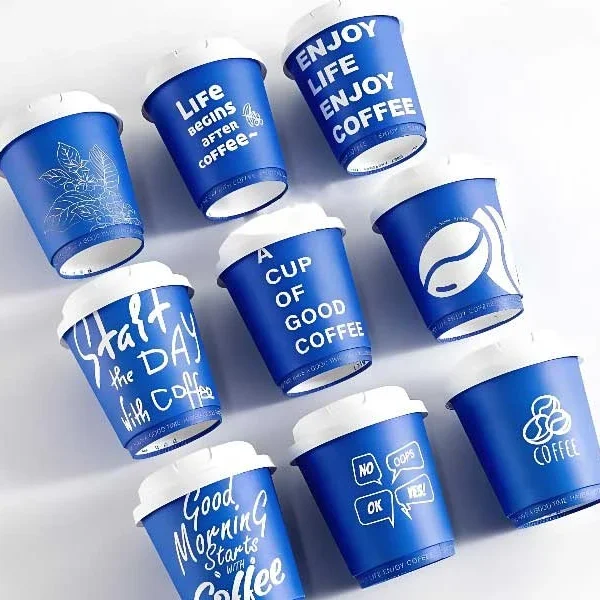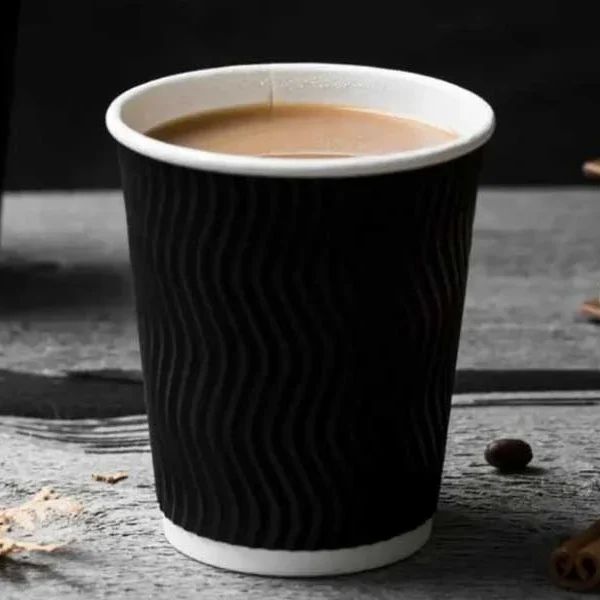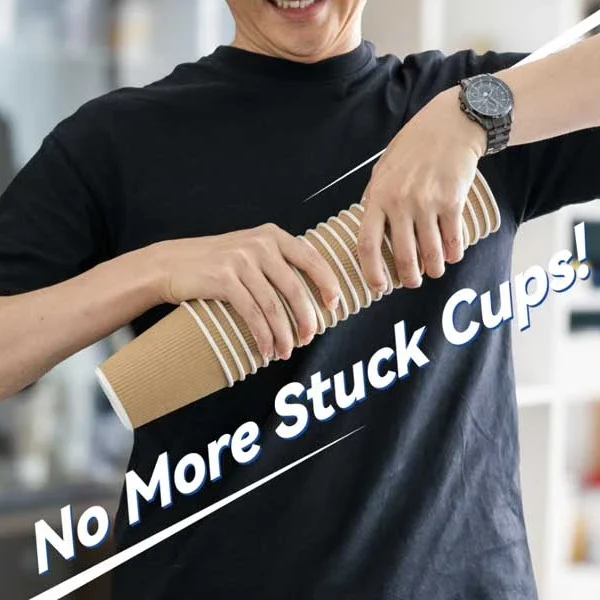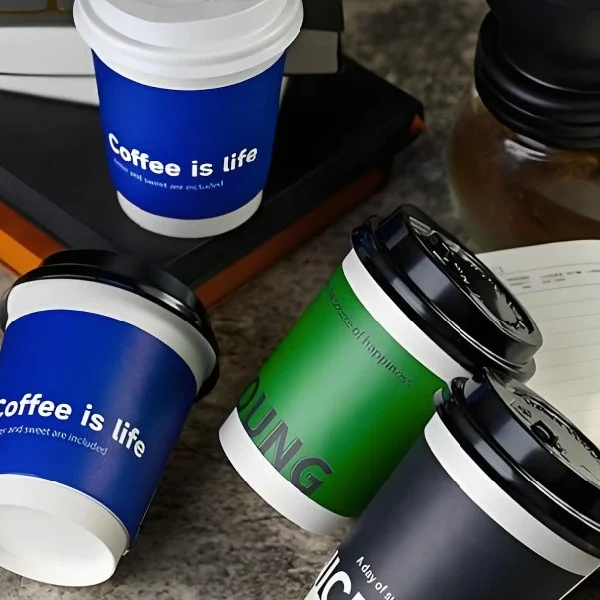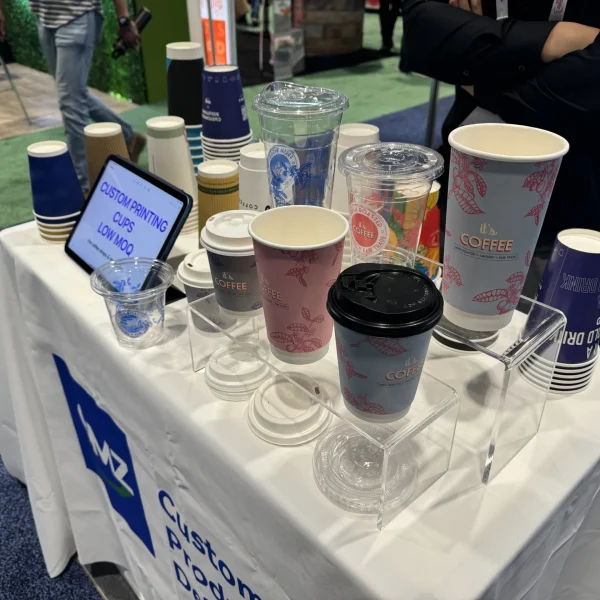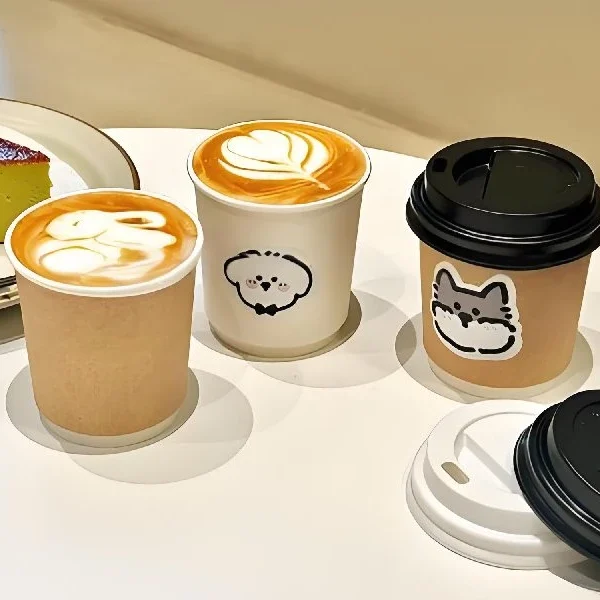Water-based coatings are becoming a popular choice for paper cups due to their eco-friendly properties and performance. This article explores what water-based coatings are, how they are applied in paper cup manufacturing, and their advantages over traditional coatings. Let’s dive into it!
Key Takeaways
- Water-based coatings are made from natural and synthetic materials, making them eco-friendly and safe for food contact.
- These coatings provide a sustainable alternative to traditional plastic coatings, helping to reduce environmental impact.
- While they are gaining popularity, water-based coatings may be more expensive and less available than traditional options.
What Are Water Based Coatings?

Water-based coatings are innovative solutions that use water as the main ingredient, making them a more eco-friendly option for various applications, including paper cups. These coatings are made from a mix of natural and synthetic materials, such as starch, cellulose, and acrylics, which help create a barrier that protects the paper from moisture and grease. This unique composition not only enhances the performance of paper products but also aligns with the growing demand for sustainable packaging solutions.
Composition and Properties of Water-Based Coatings
Water-based coatings consist of several key components:
- Water: The primary solvent that makes the coating easy to apply and environmentally friendly.
- Natural materials: Ingredients like starch and cellulose that contribute to the coating’s effectiveness and sustainability.
- Minerals: Such as calcium carbonate, which help improve the coating’s properties.
- Synthetic polymers: Like acrylic and PLA, they provide additional water resistance and durability.
This combination allows water-based coatings to be compostable, making them a great alternative to traditional plastic coatings.
Why Water-Based Coatings Are Gaining Popularity

The rise in popularity of water-based coatings can be attributed to several factors. As consumers become more environmentally conscious, they are increasingly seeking products that reduce their ecological footprint. Water-based coatings offer a sustainable solution that is both biodegradable and recyclable, making them a preferred choice for manufacturers looking to meet consumer demands for greener options.
Safety is another significant reason for the growing acceptance of water-based coatings. These coatings are made from materials that are safe for food contact and comply with regulations set by organizations like the FDA. Unlike traditional coatings, they do not release harmful chemicals or microplastics into beverages, ensuring a safer experience for consumers.
Water-based coatings have the potential to let paper surpass plastic, glass, and aluminum as the perfect material for sustainable single-use food packaging.
How Is It Used in Paper Cup Manufacturing?

In the world of paper cup manufacturing, water-based coatings play a crucial role. These coatings are applied to the paperboard to enhance its water resistance, which is essential for keeping beverages contained. The process involves coating the paperboard with a thin layer of the water-based solution, allowing it to absorb into the fibers. This method not only reduces the amount of material needed but also maintains the necessary leak-proof qualities.
Application Methods for Water-Based Coatings
The application of water-based coatings can be done using various methods, with reverse roll coating being one of the most effective. This technique allows for precise control over the amount of coating applied, ensuring an even distribution across the paper surface. The result is a strong barrier that protects the paper from moisture and grease, making it suitable for hot and cold drinks.
In the coating process, the prepared paperboard is laminated with a thin layer to increase its water resistance, which is vital in ensuring the cup’s functionality.
As more businesses shift towards greener practices, these coatings are becoming a popular choice in the industry.
How Does It Compare to Traditional Coatings?
As to paper cups, the choice of coating can significantly affect both performance and environmental impact. Water-based coatings are becoming a popular choice as they offer a more sustainable alternative to traditional coatings like polyethylene (PE), polylactic acid (PLA), and wax.
Water-Based Coating vs. PE Coating
PE coatings have been the standard for a long time due to their excellent durability and moisture resistance. However, they are not biodegradable, which raises concerns about their environmental impact. In contrast, water-based coatings are made from natural and synthetic materials, making them compostable and recyclable. This shift towards eco-friendliness is crucial as consumers become more aware of sustainability issues.
| Feature | Water-Based Coating | PE Coating |
|---|---|---|
| Material | Natural & synthetic blend | Petroleum plastic |
| Sustainability | Compostable & recyclable | Not biodegradable |
| Performance | Good for hot and cold drinks | Excellent moisture barrier |
Water-Based Coating vs. PLA Coating

PLA coatings are made from plant-based materials and are biodegradable. However, they may not perform as well as PE in terms of heat resistance. Water-based coatings, while slightly more expensive upfront, can offer long-term cost savings by reducing material usage. They also provide a good balance between performance and environmental benefits.
Water-Based Coating vs. Wax Coating
Wax coatings are a natural option but are limited to cold beverages and can be less effective in wet conditions. Water-based coatings, on the other hand, can handle both hot and cold drinks, making them a more versatile choice.
In summary, while traditional coatings like PE and wax have their advantages, water-based coatings are emerging as a strong contender due to their eco-friendly properties and versatility in application. As the industry evolves, these coatings may become the standard for paper cup manufacturing, aligning with consumer demand for sustainable products.
Environmental Benefits of Water Based Coatings

Eco-Friendly Advantages
Water-based coatings are a game changer for the environment. They are made from natural materials and water, making them a sustainable choice compared to traditional plastic coatings. This means they can break down more easily in nature, reducing waste and pollution. Unlike PE-coated cups, which can end up in landfills for years, water-based coated cups are more likely to be composted or recycled.
Comparing Water Based and Solvent Based Coatings
When we look at water-based coatings versus solvent-based coatings, the differences are clear. Solvent-based coatings often contain harmful chemicals that can be bad for both the environment and human health. In contrast, water-based coatings are safer and have lower emissions during production. This makes them a better option for manufacturers who want to reduce their environmental impact.
Recycling and Disposal Considerations
Recycling water-based coated paper cups is much easier than recycling those with PE coatings. Since water-based coatings are biodegradable, they can be processed more efficiently in recycling facilities. This means less waste ends up in landfills.
| Feature | Water-Based Coatings | Solvent-Based Coatings |
|---|---|---|
| Biodegradability | Yes | No |
| Environmental Impact | Low | High |
| Safety for Human Health | High | Low |
| Recycling Efficiency | High | Low |
By choosing water-based coatings, we are taking a step towards a more sustainable future, making them a popular choice in the paper cup industry.
Challenges of Using Water-Based Coatings

Cost and Availability Issues
Water-based coatings, while eco-friendly, often come with a higher price tag compared to traditional options like PE coatings. This can be a hurdle for many businesses, especially smaller ones that operate on tight budgets. Additionally, these coatings are not as widely available, which means that sourcing them might require extra effort and time. As the market for these products grows, we may see improvements in both cost and availability.
Performance Considerations
While water-based coatings are a great alternative, they may not always match the performance of PE coatings. For instance, they might not resist heat and grease as effectively, which can limit their use for certain beverages or foods. This performance gap can be a concern for manufacturers who prioritize durability and functionality in their products.
The transition to water-based coatings is not just about being eco-friendly; it also involves understanding the trade-offs in performance and cost.
Consumer Awareness
Another challenge is that many consumers are still unaware of the benefits of water-based coatings. This lack of knowledge can lead to hesitation in choosing these products over traditional options. Educating customers about the advantages of water-based coatings is essential for their wider acceptance in the market.
| Challenge | Description |
|---|---|
| Cost | Higher initial costs compared to PE coatings. |
| Availability | Limited supply and sourcing difficulties. |
| Performance | May not match PE in heat and grease resistance. |
| Consumer Awareness | Need for education on the benefits of water-based coatings. |
While challenges such as cost and availability exist, the benefits of using water-based coatings far outweigh the drawbacks.
Conclusion

In conclusion, water-based coatings for paper cups are paving the way for a greener future. These eco-friendly options not only help reduce plastic waste but also offer a safe choice for consumers. With companies like GMZ leading the charge with their plastic-free paper cups, which perform just as well as traditional options, it’s clear that sustainability is becoming a priority in the industry. While there are some challenges, such as cost and availability, the benefits of using water-based coatings are hard to ignore. As more coffee shops and consumers embrace these greener alternatives, we can look forward to a world where enjoying our favorite drinks comes with less environmental impact.
Frequently Asked Questions
Water-based coatings are made from a mixture of water, natural materials like starch and cellulose, and some synthetic materials like acrylics. This mix helps make them eco-friendly.
Yes! Water-based coated paper cups are safe for food. They follow safety rules set by organizations like the FDA, and they don’t release harmful chemicals.

